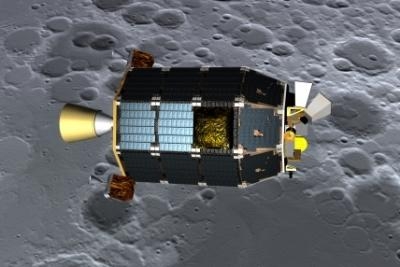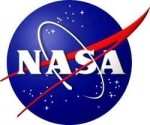LADEE Set To Depart For Luna September 6
In an attempt to answer prevailing questions about our moon, NASA is making final preparations to launch a probe at 11:27 p.m. EDT Friday, Sept. 6, from NASA's Wallops Flight Facility on Wallops Island, VA. The small car-sized Lunar Atmosphere and Dust Environment Explorer (LADEE) is a robotic mission that will orbit the moon to gather detailed information about the structure and composition of the thin lunar atmosphere and determine whether dust is being lofted into the lunar sky. A thorough understanding of these characteristics of our nearest celestial neighbor will help researchers understand other bodies in the solar system, such as large asteroids, Mercury, and the moons of outer planets.

"The moon's tenuous atmosphere may be more common in the solar system than we thought," said John Grunsfeld, NASA's associate administrator for science in Washington. "Further understanding of the moon's atmosphere may also help us better understand our diverse solar system and its evolution."
The mission has many firsts, including the first flight of the Minotaur V rocket, testing of a high-data-rate laser communication system, and the first launch beyond Earth orbit from the agency's Virginia Space Coast launch facility. LADEE also is the first spacecraft designed, developed, built, integrated and tested at NASA's Ames Research Center in Moffett Field, CA. The probe will launch on a U.S. Air Force Minotaur V rocket, an excess ballistic missile converted into a space launch vehicle and operated by Orbital Sciences Corp. of Dulles, VA.
LADEE was built using an Ames-developed Modular Common Spacecraft Bus architecture, a general purpose spacecraft design that allows NASA to develop, assemble and test multiple modules at the same time. The LADEE bus structure is made of a lightweight carbon composite with a mass of 547.2 pounds -- 844.4 pounds when fully fueled. "This mission will put the common bus design to the test," said Ames Director S. Pete Worden. "This same common bus can be used on future missions to explore other destinations, including voyages to orbit and land on the moon, low-Earth orbit, and near-Earth objects."
Butler Hine, LADEE project manager at Ames, said the innovative common bus concept brings NASA a step closer to multi-use designs and assembly line production and away from custom design. "The LADEE mission demonstrates how it is possible to build a first class spacecraft at a reduced cost while using a more efficient manufacturing and assembly process," Hine said.

Approximately one month after launch, LADEE will begin its 40-day commissioning phase, the first 30 days of which the spacecraft will be performing activities high above the moon's surface. These activities include testing a high-data-rate laser communication system that will enable higher rates of satellite communications similar in capability to high-speed fiber optic networks on Earth. After commissioning, LADEE will begin a 100-day science phase to collect data using three instruments to determine the composition of the thin lunar atmosphere and remotely sense lofted dust, measure variations in the chemical composition of the atmosphere, and collect and analyze samples of any lunar dust particles in the atmosphere. Using this set of instruments, scientists hope to address a long-standing question: Was lunar dust, electrically charged by sunlight, responsible for the pre-sunrise glow above the lunar horizon detected during several Apollo missions?
After launch, Ames will serve as a base for mission operations and real-time control of the probe. NASA's Goddard Space Flight Center in Greenbelt, MD, will catalogue and distribute data to a science team located across the country.
(Pictured: An artist's concept of NASA's Lunar Atmosphere and Dust Environment Explorer (LADEE) spacecraft seen orbiting near the surface of the moon)
 Classic Aero-TV: Pure Aerial Precision - The Snowbirds at AirVenture 2016
Classic Aero-TV: Pure Aerial Precision - The Snowbirds at AirVenture 2016 NTSB Final Report: Costruzioni Aeronautiche Tecna P2012 Traveller
NTSB Final Report: Costruzioni Aeronautiche Tecna P2012 Traveller ANN's Daily Aero-Linx (11.23.25)
ANN's Daily Aero-Linx (11.23.25) ANN's Daily Aero-Term (11.23.25): Request Full Route Clearance
ANN's Daily Aero-Term (11.23.25): Request Full Route Clearance Aero-News: Quote of the Day (11.23.25)
Aero-News: Quote of the Day (11.23.25)




